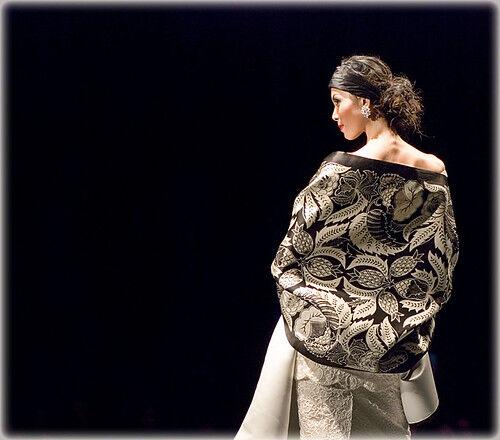Art can be transmitted through a number of different mediums, whether it be a canvas for a painting, instruments for a piece of music or ice skates for a figure skating performance. One medium that caught my interest is the practice of haute couture, French for “high dressmaking.” People have often sneered at this artform for being pompous and a ridiculous way to sell clothes when, in reality, it is a movement for the appreciation of design.
The haute couture movement began in the 19th century by Charles Fredrick Worth, but was later revolutionized by Christian Dior in 1947, after dropping the “New Look” collection, paving the way for the more modern version of haute couture. The end of rations and restrictions after World War II gave way for fashion designers to appreciate the essentials, like pressure in a hose soon burst out a new era of creativity. Fashion designers since then have transformed the essentialism of clothing into an artistic craft that can hold metaphysical meaning.
Haute couture shouldn’t be compared to ordinary fashion, especially fast fashion, which has become the norm today. It is by name, “high dressmaking,” an elevated form of clothing that trades versatility for art. No subtleties are made; the clothing appears as it is worn, bringing in a higher element of appreciation to what clothing can become. Dedication and hours are put into each garment, with pieces highlighting the significance of tapestry, sewing, design and detail.
All this expertise and craft is then put on display for the public, typically in the fashion of exclusive shows. This is all done to sell the idea of the brand and the mind of the designer, not the sole intention of a piece itself: an image of what the brand represents and the course the designer has in mind at that time. Whether or not you like the piece is up to you.
Many are critical of haute couture, not out of malice, but of the way fashion has been set in societal standards. Clothing is a material humans have been using for millennia, covering and protecting our ancestors from natural elements. Nowadays, clothing has become an essential in everyday life, whether for niche necessity in an occupation, or for the display of personality, culture or wealth. We have been conditioned to see it as it appears since, to many, it is easily accessible and free of scarcity.
As for haute couture, we simply cannot see ourselves wearing such garments since many of us in the middle class cannot fathom a situation in which it will be needed. Many are quick to point out the ridiculous clothing and the makeup applied to the models donning these garments, but, if anything, the absurdity is what makes it so entertaining. The key to appreciation isn’t finding an excuse for the clothing, but to relish in its design.
One way to better appreciate haute couture is developing a sense of detachment from the reality of the piece. In the same way we value Greek mythological paintings, we must do so with haute couture. In such Greek mythological scenarios, we don’t dismiss the pieces because they are not realistic, but find beauty within their context, depiction and skills used to create it. With haute couture, the detachment of realism can make us see the piece as something out of this world, a scenario that is so specific to the niche portrayal of fashion. When we then see such extravagant forms of art entwined with the medium of clothing, the question we pose shouldn’t be “Why?” Rather, we should ask “How?”
In the same way you can appreciate a Leonardo Da Vinci piece but cannot buy it, appreciate haute couture.









